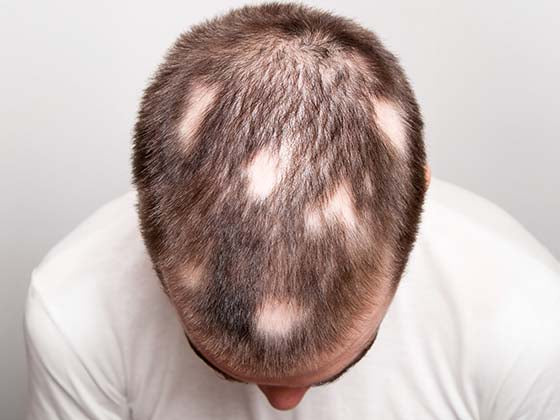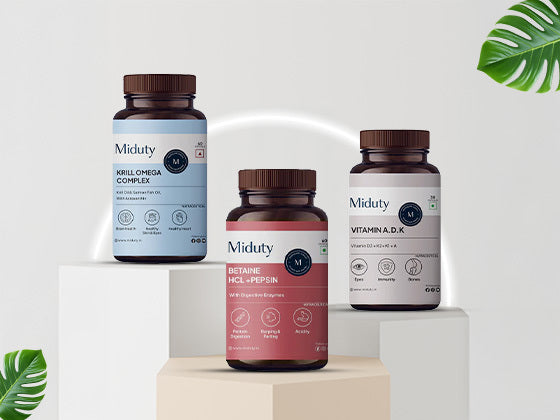Amidst the vast array of skincare ingredients, bee venom emerges as a fascinating enigma, a natural marvel with transformative potential. Beyond its humble origins, bee venom captivates with a harmonious blend of potent compounds, promising a journey to rejuvenated and radiant skin. As we delve deeper into its mysteries, we uncover the remarkable synergy of nature's bounty, where bee venom becomes a beacon of hope for those seeking ageless beauty. Join us as we embark on an odyssey of discovery, embracing the extraordinary power of bee venom to unveil the true essence of luminosity within your skin.
Understanding Bee Venom: A Closer Look at the Ingredient

Bee venom, also known as apitoxin, contains a variety of compounds that have been studied for their potential benefits in skincare. Some of the key ingredients found in bee venom and their potential skincare benefits include:
-
Melittin: This is the main component of bee venom and is responsible for its anti-inflammatory properties. Melittin may help reduce inflammation in the skin, making it useful for calming redness and irritation.
-
Hyaluronic Acid: Bee venom contains hyaluronic acid, which is a humectant that helps retain moisture in the skin. Hyaluronic acid can hydrate the skin, improve elasticity, and reduce the appearance of fine lines and wrinkles.
-
Enzymes: Bee venom contains enzymes such as phospholipase A2 and hyaluronidase, which have exfoliating properties. These enzymes can help remove dead skin cells, unclog pores, and promote cell turnover, leading to smoother and brighter-looking skin.
-
Peptides: Bee venom contains peptides, such as apamin and adolapin, which have antioxidant properties. Peptides can help protect the skin from environmental damage and reduce the signs of ageing by promoting collagen production and improving skin firmness and elasticity.
- Minerals and Vitamins: Bee venom contains various minerals and vitamins, including zinc, magnesium, potassium, and vitamin C, which are essential for healthy skin function. These nutrients can help nourish and rejuvenate the skin, promoting a more radiant complexion.
Overall, bee venom has the potential to offer a range of skincare benefits, including anti-inflammatory, hydrating, exfoliating, antioxidant, and anti-aging effects. However, it's essential to note that bee venom products may not be suitable for everyone, particularly those with bee sting allergies or sensitive skin. It's always advisable to perform a patch test before using bee venom skincare products and consult with a dermatologist if you have any concerns
The Science Behind Bee Venom: How It Works for Skin Rejuvenation
Bee venom's transformative effects on skin rejuvenation stem from its unique composition and the intricate interplay of its bioactive compounds with the skin's physiology.
-
Stimulation of Collagen Production: Bee venom contains peptides that have been shown to stimulate collagen production in the skin. Collagen is a key structural protein that provides strength and elasticity to the skin. By promoting collagen synthesis, bee venom helps to firm and plump the skin, reducing the appearance of fine lines and wrinkles and restoring a more youthful complexion.
-
Enhanced Blood Circulation: The application of bee venom to the skin can lead to increased blood circulation. Improved blood flow brings oxygen and nutrients to the skin cells, while also aiding in the removal of toxins and metabolic waste products. This enhanced circulation contributes to a healthier, more vibrant complexion.
-
Anti-inflammatory Properties: Melittin, the primary component of bee venom, exhibits potent anti-inflammatory effects. By reducing inflammation in the skin, bee venom can help alleviate redness, swelling, and irritation associated with various skin conditions such as acne, eczema, and rosacea. Calming inflammation contributes to a smoother, more even-toned complexion.
-
Exfoliation and Renewal Enzymes: It found in bee venom, such as phospholipase A2 and hyaluronidase, possess mild exfoliating properties. These enzymes help to gently remove dead skin cells, unclog pores, and promote cell turnover. Regular exfoliation encourages the emergence of fresh, radiant skin, while also improving the absorption of skincare products.
-
Antioxidant Defence: Bee venom contains peptides and other compounds with antioxidant properties, such as apamin and adolapin. These antioxidants help to neutralise free radicals, which are unstable molecules that can damage skin cells and accelerate the ageing process. By protecting against oxidative stress, bee venom contributes to the preservation of youthful skin and the prevention of premature ageing.
- Hydration and Moisture Retention: Bee venom contains hyaluronic acid, a humectant that attracts and retains moisture in the skin. Hyaluronic acid helps to hydrate the skin, improve elasticity, and create a plumping effect that diminishes the appearance of fine lines and wrinkles. Well-hydrated skin appears smoother, softer, and more supple.
These multifaceted benefits contribute to a revitalised, youthful complexion with improved tone, texture, and resilience.
Debunking Myths: What You Need to Know About Bee Venom
Bee venom has emerged as a buzzworthy ingredient in the skincare industry, captivating the attention of beauty enthusiasts and sparking curiosity about its potential benefits. However, along with the fascination surrounding bee venom skincare products, various myths and misconceptions have proliferated, casting doubt on its safety, efficacy, and ethical implications. In this article, we aim to dispel some of the negative myths associated with bee venom in skincare, providing clarity on its usage, benefits, and ethical considerations. By addressing common misconceptions and presenting evidence-based insights, we seek to empower consumers to make informed decisions about incorporating bee venom into their skincare routines.
-
Myth: Bee venom in skincare products is cruel to bees.
Reality: Bee venom used in skincare products is typically harvested using ethical and sustainable methods that do not harm the bees. Beekeepers often use a glass pane with a mild electrical current, encouraging bees to sting it voluntarily. This process stimulates the bees to release their venom without causing harm or distress to the colony.
-
Myth: Bee venom skincare products are painful to use.
Reality: Contrary to popular belief, bee venom skincare products are formulated to be gentle and suitable for most skin types. The concentration of bee venom used in skincare products is carefully regulated to provide benefits without causing discomfort or pain. While some individuals may experience a mild tingling sensation upon application, it is usually temporary and subsides quickly.
-
Myth: Bee venom in skincare is just a passing fad with no real benefits.
Reality: Research has shown that bee venom contains bioactive compounds such as melittin, peptides, and enzymes that offer various skincare benefits. These include anti-inflammatory, antioxidant, and collagen-stimulating properties. While bee venom skincare may have gained popularity in recent years, its efficacy is supported by scientific evidence and has been used in traditional medicine for centuries.
-
Myth: Bee venom skincare products are unsafe for sensitive skin.
Reality: While bee venom may cause irritation in some individuals, especially those with sensitive skin or bee sting allergies, many bee venom skincare products are formulated to be gentle and suitable for sensitive skin. It's essential to patch-test any new skincare product, including those containing bee venom, to ensure compatibility with your skin.
-
Myth: Bee venom skincare products are not regulated and may contain harmful ingredients.
Reality: In many countries, skincare products, including those containing bee venom, are subject to strict regulations to ensure safety and efficacy. Manufacturers are required to adhere to labelling requirements and provide information about the ingredients used in their products. Choosing products from reputable brands and checking for third-party certifications can help ensure product quality and safety.
In summary, while there may be misconceptions surrounding bee venom in skincare, it is essential to separate fact from fiction. When used responsibly and ethically, bee venom can offer a range of skincare benefits and contribute to healthy, radiant skin.
Bee Venom vs. Other Ingredients: Choosing the Right Skin Care Approach
When comparing bee venom with other skincare ingredients, it's essential to consider factors such as their mechanisms of action, efficacy, safety, and suitability for different skin types and concerns. Let's delve into a comparative analysis:
-
Bee Venom vs. Retinoids:
Bee Venom: Bee venom contains peptides like melittin, which stimulate collagen production and possess anti-inflammatory properties. It's effective in reducing inflammation, soothing irritated skin, and improving overall skin tone and texture. However, its anti-aging effects may be more subtle compared to retinoids.
Retinoids: Retinoids, derivatives of vitamin A, are renowned for their potent anti-aging properties. They stimulate collagen production, increase cell turnover, and diminish the appearance of fine lines, wrinkles, and hyperpigmentation. Retinoids can be harsh on sensitive skin and may cause irritation, dryness, and sun sensitivity.
-
Bee Venom vs. Hyaluronic Acid:
Bee Venom: Bee venom contains hyaluronic acid, a humectant that attracts and retains moisture in the skin. It provides hydration, improves skin elasticity, and imparts a plumping effect, reducing the appearance of fine lines and wrinkles.
Hyaluronic Acid: Hyaluronic acid is a hydrating powerhouse that can hold up to 1000 times its weight in water. It replenishes moisture in the skin, restores hydration levels, and creates a smooth, supple complexion. Unlike bee venom, hyaluronic acid primarily focuses on hydration and may not offer additional anti-inflammatory or collagen-stimulating benefits.
-
Bee Venom vs. Vitamin C:
Bee Venom: Bee venom contains antioxidants like peptides and enzymes, which combat free radicals, protect against oxidative stress, and promote overall skin health. It offers anti-aging benefits, helps reduce inflammation, and improves skin radiance.
Vitamin C: Vitamin C is a potent antioxidant that brightens the skin, fades dark spots and hyperpigmentation, and boosts collagen production. It protects the skin from environmental damage, promotes an even skin tone, and enhances overall skin vitality. While both bee venom and vitamin C offer antioxidant benefits, vitamin C may be more targeted towards brightening and pigmentation concerns.
-
Bee Venom vs. Salicylic Acid:
Bee Venom: Bee venom's anti-inflammatory properties make it effective in calming redness, soothing acne-prone skin, and reducing inflammation associated with breakouts. It promotes skin healing and renewal without causing excessive dryness or irritation.
Salicylic Acid: Salicylic acid is a beta-hydroxy acid (BHA) known for its ability to exfoliate the skin, unclog pores, and treat acne and blackheads. It penetrates deep into the pores, dissolves oil and debris, and prevents future breakouts. While salicylic acid is highly effective for acne-prone skin, it can be drying and may cause irritation, especially in higher concentrations.
In conclusion, the choice between bee venom and other skincare ingredients depends on your specific skin concerns, preferences, and tolerance levels. Bee venom offers a unique blend of anti-inflammatory, hydrating, and antioxidant properties, making it suitable for a wide range of skincare needs. However, for targeted concerns such as severe acne or deep wrinkles, you may need to incorporate additional ingredients or treatments into your skincare regimen. Consulting with a dermatologist can help you tailor a skincare approach that addresses your individual needs effectively and safely.
The Benefits of Bee Venom: Transforming Your Skin

Bee venom, a captivating fusion of nature's finest ingredients, holds the promise of a skincare metamorphosis like no other. Rich in peptides, enzymes, and hyaluronic acid, bee venom offers a multifaceted approach to skin rejuvenation. Its ability to stimulate collagen production breathes new life into tired skin, restoring elasticity and firmness for a youthful glow. With its gentle yet effective anti-inflammatory properties, bee venom soothes irritation and redness, providing relief for even the most sensitive skin types. Meanwhile, its hydrating prowess, coupled with gentle exfoliation, unveils a smoother, more radiant complexion, while antioxidant-rich compounds defend against environmental stressors, preserving skin's vitality and radiance. Embrace the transformative power of bee venom and unlock the secret to radiant, age-defying skin.
Glowing Results: How Bee Venom Enhances Skincare Radiance
Being rich in Hyaluronic Acid, Bee Venom, when used in skin care practices hydrates and plumps the skin. This makes the skin look dewy, glowy, young and radiant. In addition, its rich enzyme content such as phospholipase A2 and hyaluronidase aid in exfoliation of the skin. This sloughing action of bee venom unveils a fresher and a younger looking skin from underneath.
Bee Venom for Smoother Skin: Unveiling the Transformation
Due to increased collagen production that is achieved through its increased peptide content, the skin appears younger and firmer. Reduction in fine lines and wrinkles lead to a smoother appearance of skin. Also, hyaluronic acid makes the skin plump as it absorbs thrice the amount of water. This also makes the skin supple and smooth.
Bee Venom and Your Skincare Routine: Integration Tips for Optimal Results
Integrating bee venom into your skincare routine can yield optimal results when approached thoughtfully. Here are some tips for seamless integration:
-
Patch Test First:
Before fully incorporating bee venom products into your routine, perform a patch test on a small area of skin to check for any adverse reactions or sensitivities.
-
Start Slowly:
If you're new to bee venom skincare, start with products containing lower concentrations to allow your skin to adjust gradually. Monitor how your skin responds before increasing usage.
-
Consistency is Key:
Incorporate bee venom products into your routine consistently for best results. Use them as directed and be patient, as noticeable improvements may take time.
-
Layering with Other Products:
Bee venom products can be integrated into your existing skincare routine. Apply them after cleansing and toning, but before heavier creams or moisturisers. This allows the active ingredients in bee venom to penetrate effectively.
-
Combine with Complementary Ingredients:
Consider pairing bee venom with other skincare ingredients that complement its benefits. For example, hyaluronic acid can enhance hydration, while vitamin C can boost antioxidant protection.
-
Sun Protection:
Since bee venom can increase skin sensitivity to sunlight, it's crucial to apply sunscreen such as Clinikally SunProtect Sunscreen SPF 50/PA+++ daily, especially when using bee venom products. This helps protect your skin from UV damage and prevents further irritation.
-
Listen to Your Skin:
Pay attention to how your skin responds to bee venom products. If you experience any discomfort or irritation, reduce frequency or discontinue use. Everyone's skin is unique, so adjust your routine accordingly.
-
Consult a Professional:
If you have specific skincare concerns or medical conditions, consult a dermatologist or skincare professional before incorporating bee venom into your routine. They can provide personalised advice based on your individual needs.
By following these integration tips, you can maximise the benefits of bee venom in your skincare routine while ensuring a smooth and effective transition for your skin.
Bee Venom in Practice: Professional vs. DIY

When considering bee venom for skincare, it's essential to weigh the pros and cons of professional treatments versus DIY approaches:
-
Professional Bee Venom Treatments:
-
Expert Application:
Professional treatments are administered by trained estheticians or dermatologists who have experience working with bee venom products. They can customise the treatment to your skin type and concerns, ensuring optimal results. Book an appointment with our top dermatologists now!!
-
Higher Concentrations:
Professional-grade bee venom products often contain higher concentrations of active ingredients, providing more potent and targeted results compared to over-the-counter options.
-
Safety and Efficacy:
Professional treatments undergo rigorous testing and quality control measures to ensure safety and efficacy. You can have confidence in the quality of the products used and the expertise of the professional administering the treatment.
-
Combination Therapies:
Professionals may combine bee venom treatments with other skincare modalities, such as microdermabrasion or LED therapy, to enhance results and address multiple concerns simultaneously.
2. DIY Bee Venom Skincare:
-
Convenience:
DIY bee venom skincare allows you to incorporate bee venom into your routine at your convenience, without the need for appointments or visits to a professional.
-
Cost-Effective:
DIY bee venom skincare products are often more affordable than professional treatments, making them accessible to a broader range of individuals.
-
Control Over Ingredients:
DIY recipes allow you to control the ingredients used, ensuring that you avoid potential allergens or irritants. However, it's essential to research and follow recipes carefully to ensure safety and efficacy.
-
Limited Expertise:
DIY treatments lack the expertise and precision of professional treatments. Without proper knowledge and training, there is a risk of improper application or adverse reactions.
Ultimately, the choice between professional bee venom treatments and DIY approaches depends on your skincare goals, budget, and comfort level. If you're looking for targeted results and have specific concerns, a professional treatment may be the best option. However, if you prefer convenience and affordability, DIY bee venom skincare can be a viable alternative. Regardless of your choice, it's essential to prioritise safety and consult with a skincare professional if you have any questions or concerns.
Professional Bee Venom Treatments: What to Expect from Expert Skincare
Professional bee venom treatments offer a tailored and comprehensive approach to skincare, harnessing the power of bee-derived ingredients under the expertise of trained professionals. Here's what you can expect from a professional bee venom treatment:
-
Consultation and Assessment:
Your journey begins with a thorough consultation with a skincare expert, such as an esthetician or dermatologist. They will assess your skin type, concerns, and goals to customise the treatment to your specific needs.
-
Customised Treatment Plan:
Based on your consultation, the skincare professional will design a personalised treatment plan that may include various bee venom-based products and techniques tailored to address your unique skincare concerns.
-
Professional-Grade Products:
Professional bee venom treatments utilise high-quality, medical-grade products that contain concentrated and purified forms of bee venom. These formulations are carefully selected to ensure maximum efficacy and safety.
-
Expert Application Techniques:
Skincare professionals are trained in specialised application techniques to ensure optimal penetration and absorption of bee venom products. They may perform manual massage, use specialised tools, or incorporate advanced technologies to enhance the treatment's effectiveness.
-
Complementary Treatments:
In some cases, professional bee venom treatments may be combined with other skincare modalities, such as microdermabrasion, chemical peels, or LED therapy, to further enhance results and address specific concerns like acne, ageing, or hyperpigmentation.
-
Monitoring and Follow-Up:
Throughout the treatment session, the skincare professional will closely monitor your skin's response and adjust the treatment as needed to ensure safety and efficacy. They may also provide guidance on post-treatment care and follow-up appointments to track progress and maintain results over time.
-
Long-Term Results:
Professional bee venom treatments offer cumulative benefits over time, with noticeable improvements in skin texture, tone, and radiance. With regular sessions and proper skincare maintenance, you can achieve long-lasting results and a healthier, more vibrant complexion.
Overall, professional bee venom treatments provide a holistic approach to skincare, combining expert knowledge, advanced techniques, and high-quality products to deliver transformative results tailored to your individual needs. Whether you're targeting signs of ageing, acne, or dullness, professional bee venom treatments offer a safe, effective, and luxurious skincare experience that elevates your skin to new heights of beauty and vitality.
DIY Bee Venom Tips: Navigating the Path to Beautiful Skin
Navigating the path to beautiful skin with DIY bee venom treatments can be both exciting and rewarding. Here are some tips to help you make the most of your DIY bee venom skincare journey:
-
Research and Educate Yourself:
Before diving into DIY bee venom treatments, take the time to research and educate yourself about bee venom, its benefits, and potential risks. Understand how bee venom works and how to safely incorporate it into your skincare routine.
-
Start Slowly:
If you're new to bee venom skincare, start with low concentrations and perform a patch test on a small area of skin to check for any adverse reactions or sensitivities. Gradually increase usage as your skin becomes accustomed to the treatment.
-
Use High-Quality Products:
Invest in high-quality bee venom products or ingredients from reputable sources to ensure purity and efficacy. Look for products with minimal additives or fillers to maximise the benefits of bee venom for your skin.
-
Follow DIY Recipes Carefully:
When making your own bee venom skincare products at home, follow DIY recipes carefully and accurately. Use precise measurements and quality ingredients to ensure safety and effectiveness.
-
Perform Proper Skin Prep:
Before applying bee venom products, cleanse your skin thoroughly to remove dirt, oil, and impurities. This allows the bee venom to penetrate more effectively and deliver optimal results.
-
Be Consistent:
Consistency is key when it comes to DIY bee venom treatments. Incorporate them into your skincare routine regularly, following the recommended usage instructions to achieve the best results over time.
-
Monitor Your Skin's Response:
Pay close attention to how your skin responds to DIY bee venom treatments. If you experience any irritation, redness, or discomfort, discontinue use immediately and consult a dermatologist if necessary.
-
Protect Your Skin:
Since bee venom can increase sensitivity to sunlight, it's essential to apply sunscreen daily when using bee venom products. This helps protect your skin from UV damage and prevents further irritation or pigmentation issues.
-
Stay Hydrated and Nourished:
Support your skin's health and recovery by staying hydrated and nourished from the inside out. Drink plenty of water, eat a balanced diet rich in antioxidants and nutrients, and prioritise overall wellness.
-
Be Patient and Persistent:
Results from DIY bee venom treatments may take time to manifest, so be patient and persistent in your skincare journey. With continued use and proper care, you can achieve beautiful, radiant skin that glows with vitality and health.
By following these DIY bee venom tips and practices, you can navigate the path to beautiful skin with confidence and enjoy the transformative benefits of bee venom in your skincare routine.
Safety First: Key Considerations for a Successful Bee Venom Experience
Safety is paramount when incorporating bee venom into your skincare routine. Here are key considerations for a successful experience:
-
Allergy Testing: Perform a patch test before use to check for adverse reactions.
-
Consultation: Seek advice from a dermatologist, especially if you have allergies or sensitive skin.
-
Quality Products: Choose reputable brands known for purity and safety.
-
Proper Application: Follow instructions carefully and avoid broken skin.
-
Sun Protection:Use sunscreen daily to prevent increased sun sensitivity.
-
Monitoring:Pay attention to your skin's response and adjust usage as needed.
- Pregnancy and Nursing: Consult your healthcare provider before use during these times.
Prioritising safety ensures a positive bee venom skincare journey, yielding beautiful results while minimising risks.
Beyond Bee Venom: Personalised Recommendations for Your Skin

Beyond bee venom, personalised skincare recommendations can help address specific concerns and optimise your skincare routine. Here are some tailored suggestions based on common skincare goals:
-
Anti-Aging:
Incorporate retinoids or peptides to boost collagen production and minimise wrinkles. Consider Clinikally Vitamin C3+ Serum for brightening and antioxidant protection.
-
Hydration:
Hyaluronic acid serums or moisturisers rich in ceramides and fatty acids such Clinikally HydraSoothe Moisturiser and Clinikally Hyaluronic SkinBooster Serum can deeply hydrate the skin, along with reinforcing the skin barrier for long-lasting moisture retention.
-
Acne-prone Skin:
Salicylic acid or benzoyl peroxide can help unclog pores and reduce acne breakouts. Niacinamide serum such as Clinikally The Ultimate NIA (10% Niacinamide) Serum is also effective in regulating oil production and calming inflammation.
-
Sensitive Skin:
Opt for gentle, fragrance-free products with soothing ingredients like colloidal oatmeal, centella asiatica, or chamomile extract. Mineral-based sunscreens are less likely to cause irritation.
-
Uneven Skin Tone:
Incorporate exfoliating ingredients like glycolic acid or lactic acid to promote cell turnover and fade dark spots. Vitamin C and niacinamide can also help brighten and even out the complexion.
-
Dryness and Flakiness:
Look for rich moisturisers containing ingredients like shea butter, squalane, or argan oil to replenish lost moisture and nourish the skin.
-
Sun Protection:
Daily application of broad-spectrum sunscreen with SPF 30 or higher such as Clinikally SunProtect Sunscreen SPF 50/PA+++ is essential to protect against UV damage and prevent premature ageing.
Unveiling Bee Venom's Brilliance: A Skincare Revelation

In the realm of skincare, bee venom stands as a revelation, offering a unique and potent elixir for radiant skin. With its multifaceted benefits, from collagen stimulation to inflammation reduction, bee venom transcends traditional skincare boundaries. As we embrace this extraordinary ingredient, we embark on a transformative journey towards a complexion that radiates with unparalleled beauty and vitality. Bee venom's brilliance illuminates our skin care routine, unveiling a path to luminous, youthful skin like never before.









































1 comment
Cynthia brink
What bee venom cream is the best
What bee venom cream is the best